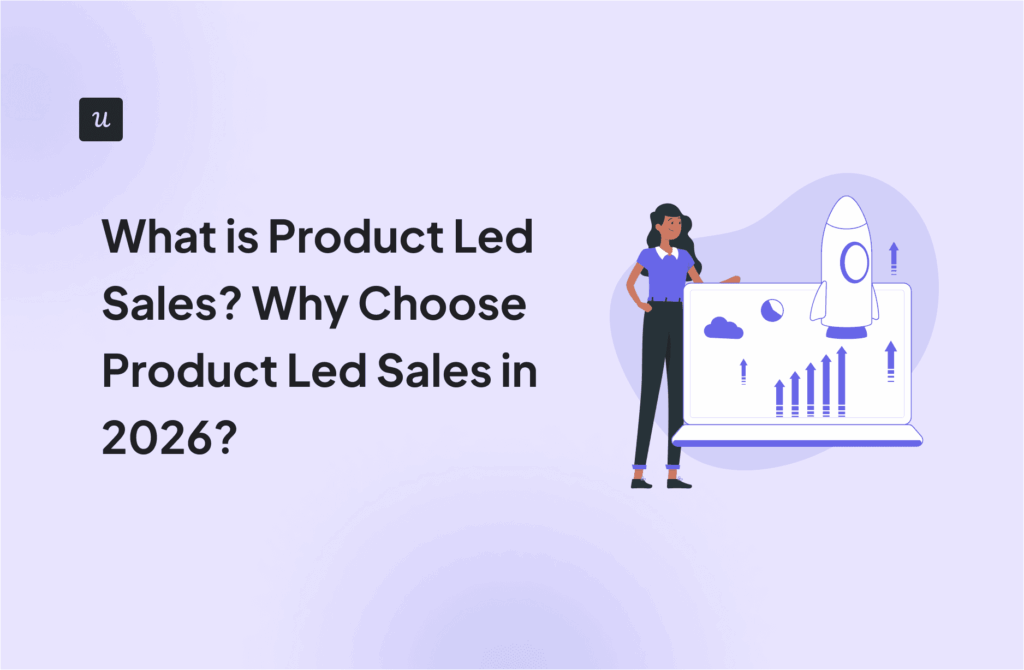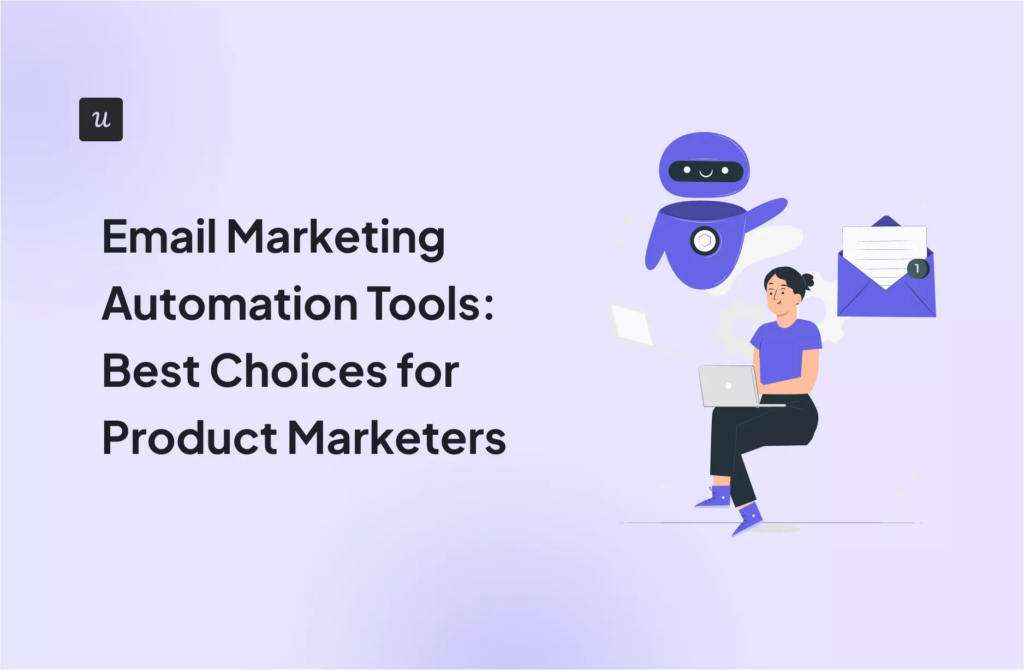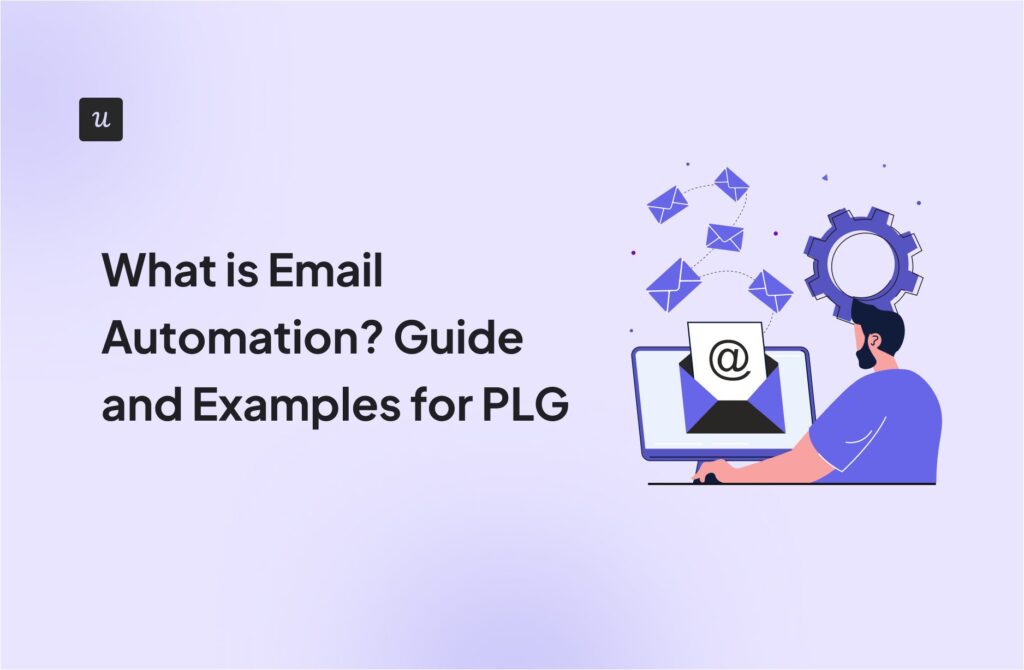![Product Marketing: Product Launch Announcement Emails: The Ultimate Guide for SaaS [Examples Included]](https://blog-static.userpilot.com/blog/wp-content/uploads/2021/10/Product-Launch-Announcement-Emails-The-Ultimate-Guide-for-SaaS_0fc99903f71f2ad2e0950f79405a0f5e_2000.png)
Product Launch Announcement Emails: The Ultimate Guide for SaaS [Examples Included]
Product launch announcement emails can be intimidating. They have to be informative, engaging, and contextual. Not sure where to start? No worries! We’ve got you covered.
In this blog post, I’ll take you through the different types of product launch announcement emails, the product launch email sequence best practices to keep in mind throughout the process, and some fantastic real-life examples to inspire you in your own campaign.
Let’s get started.
Try Userpilot Now
See Why 1,000+ Teams Choose Userpilot

TL;DR
- Product launch emails are a way of communicating with your existing customers – keeping them up to date with new developments, new features, and the launch of an upcoming product.
- There are seven types of product launch emails: product launch campaign, product launch email sequence, beta (early access) announcement email, new feature announcement email, pre-order announcement email, teaser email campaign, and event announcement email.
- You should keep best practices, including focusing on one CTA and design consistency and staying on brand, in mind throughout your campaign.
- Don’t forget about onboarding welcome emails – pair them with in-app guidance to shorten the learning curve and help users adopt your product much easier and faster.
- Subject lines shouldn’t be clickbaity and should be on-brand, personalized, and contextual.
What is a product launch email?
Product launch emails are a way of communicating with your existing customers. They keep them up to date with a current product’s latest developments, including new features, and the launch of an upcoming product.
Launch messages are all about building anticipation.
They’re your chance to show the value of your customers by highlighting the benefits it has. Get them excited to try it. If you need some inspiration, there are a lot of product launch email templates on the Internet! Just do a bit of research.
Product launch announcement email types to send?
You want your customers to get the most out of your product, right?
So you need to be in constant communication with them – to inform them of any changes or new product launches, or even upcoming events or webinars!
There are seven types of messages you can use. Here we go.
Product launch campaign
This is a one-time email sent as part of a launch campaign that can be spread across multiple channels.
It will be the start of your campaign, with the aim of raising awareness. Its goal is to announce the new product launch and invite the user to try it out.
Apple’s product launch campaigns are among the best and for good reason. Check out this one below – it’s sleek and spaced out, and provides an enticing sneak peek into four new products that build anticipation among their existing customers.
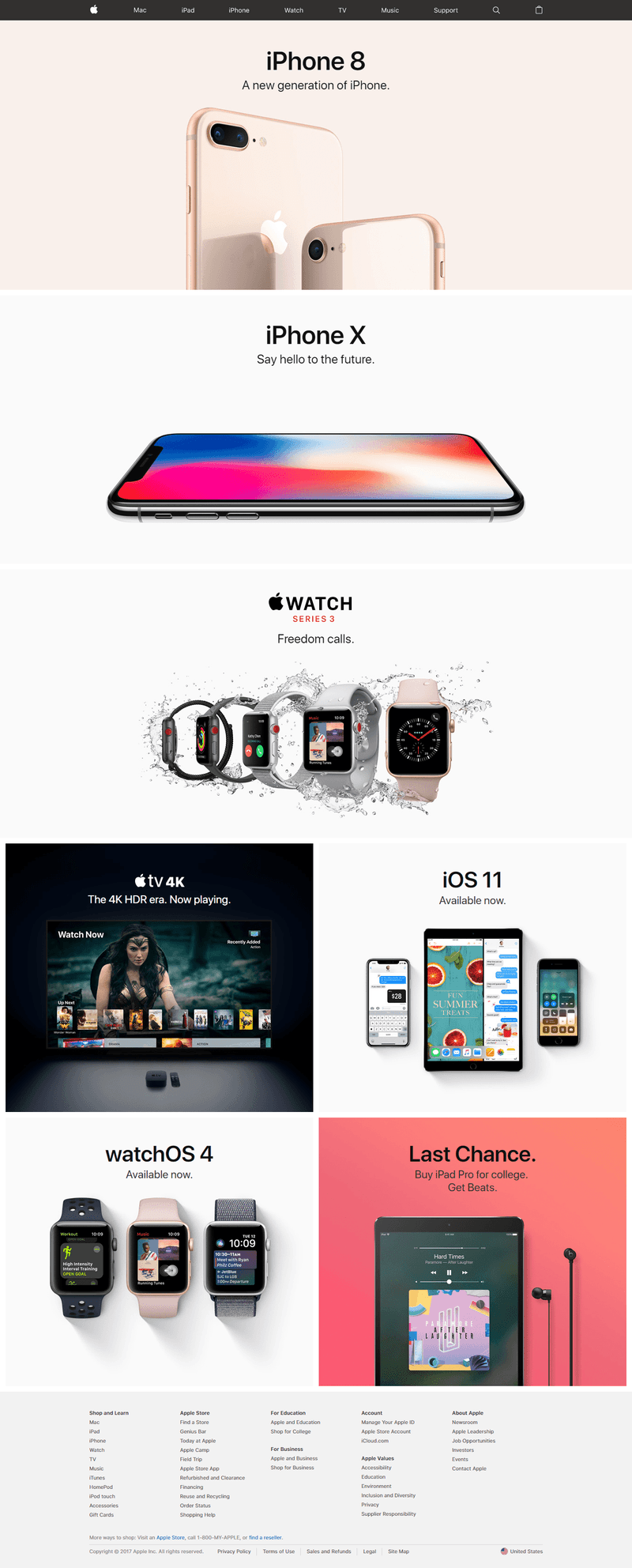
Product launch email sequence
This is a series of emails sent either time based or event-based:
- Time-based: sent every day or every other day for a limited time giving the user reminders and reasons for engaging with the new product
- Event-based: a series of emails sent/triggered based on specific in-app activity during a specific time frame (for example, the first two weeks after launch or until the user hits a certain milestone of adopting the new product)
Canva is great at celebrating milestones, which they do through their product launch email sequences.
These are great because they appeal to the users’ sense of achievement – if your product can release endorphins every time they achieve something in-app, they’ll come back again and again. It’s simple science!
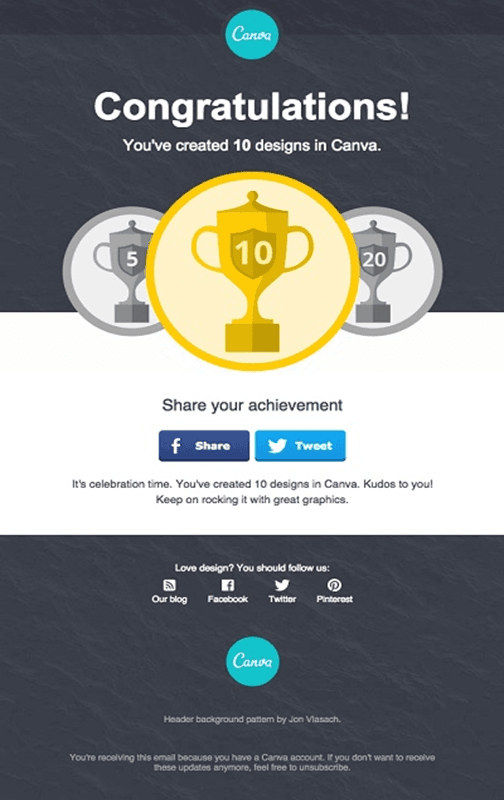
Beta (early access) announcement email
This is a one-time email inviting the user to subscribe for early access.
In SaaS, these are usually part of your beta announcement – when you release your product to only a handful of users in exchange for feedback. They’re great for attracting your target audience and it gives you a chance to fix any issues before the official launch.
Framer Web does it right – simple and straight to the point. And no images to distract the reader.
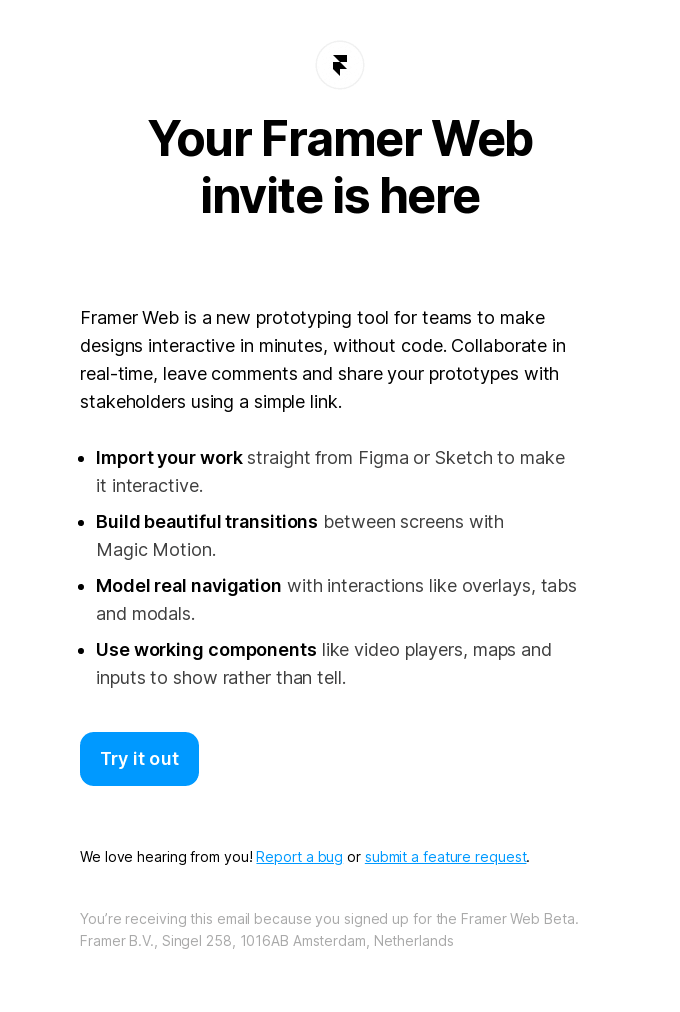
Framer Web does it right – simple and straight to the point. And no images to distract the reader.
New feature announcement email
This is a one-time email to announce a new feature or a new feature enhancement.
Done right, they can excite your customers and build trust – customers like to see that you’re constantly developing and improving your product using their feedback, as shown in this example from ProdPad.
Their email subject line is attention-grabbing, refreshingly casual (emojis can be great for marketing depending on your target audience), and showcases that they value the opinions of their customers.
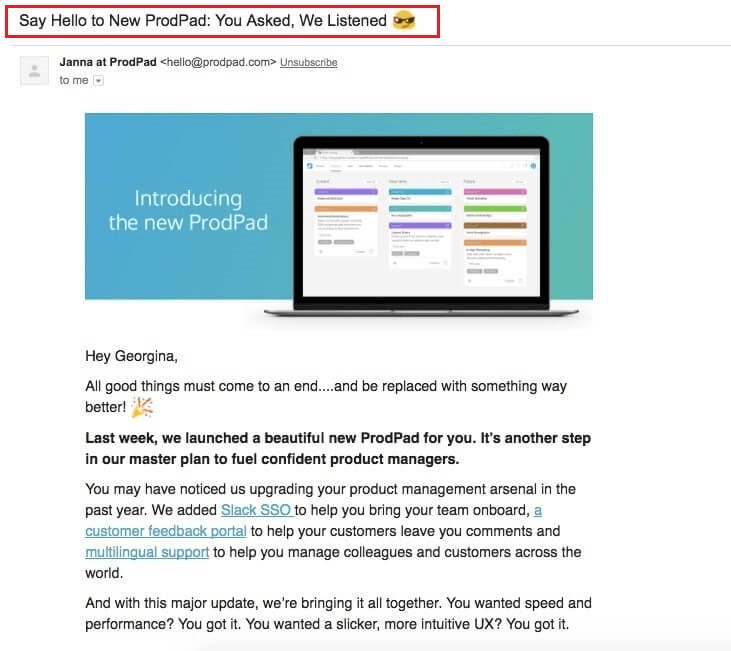
Pre-order announcement email
This is a one-time email to announce when a specific product/ access will be available with the purpose of collecting pre-orders.
Again, Apple is among the best. Their elegant pre-order announcement email makes their latest model feel prestigious.
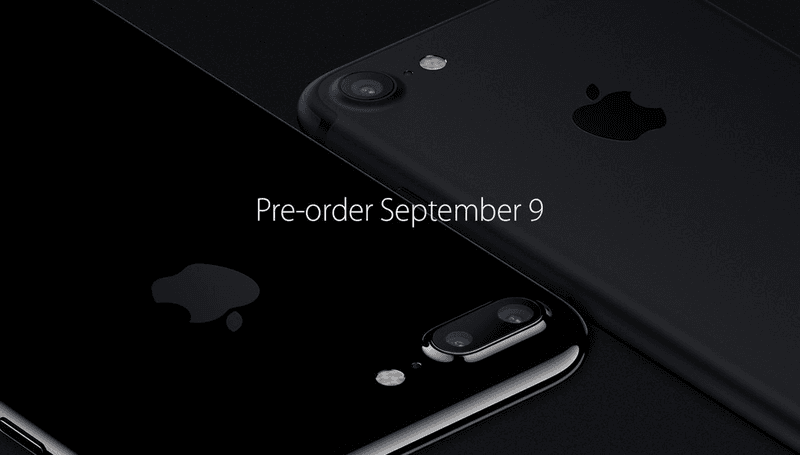
Teaser email campaign
This is a one time-email to tease someone into a future event.
This can help build excitement and increase open rates to your announcement email since users will be looking for it.
Although not a SaaS example, Hotel Management.net is a brilliant example of teasing your audience and building anticipation.
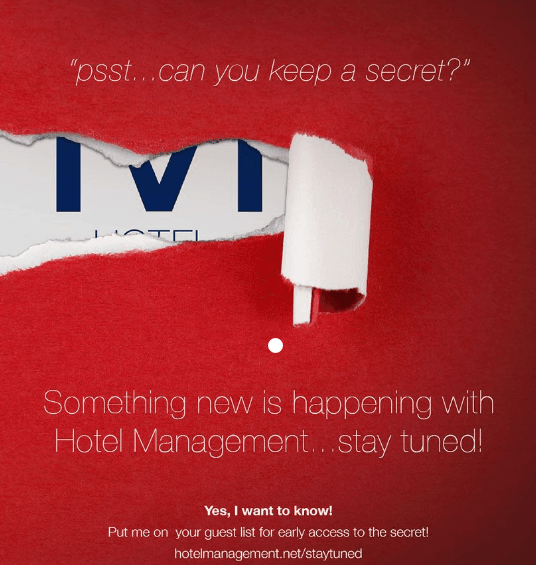
Event announcement email
Not exactly a product announcement but email is usually a great medium to announce events your company is putting out there – either for educational content such as conferences or supporting a cause and sometimes to announce your next product launch event.
We all know of Apple’s product announcement events, but others are also making their mark, including Google – check out the intriguing example below.
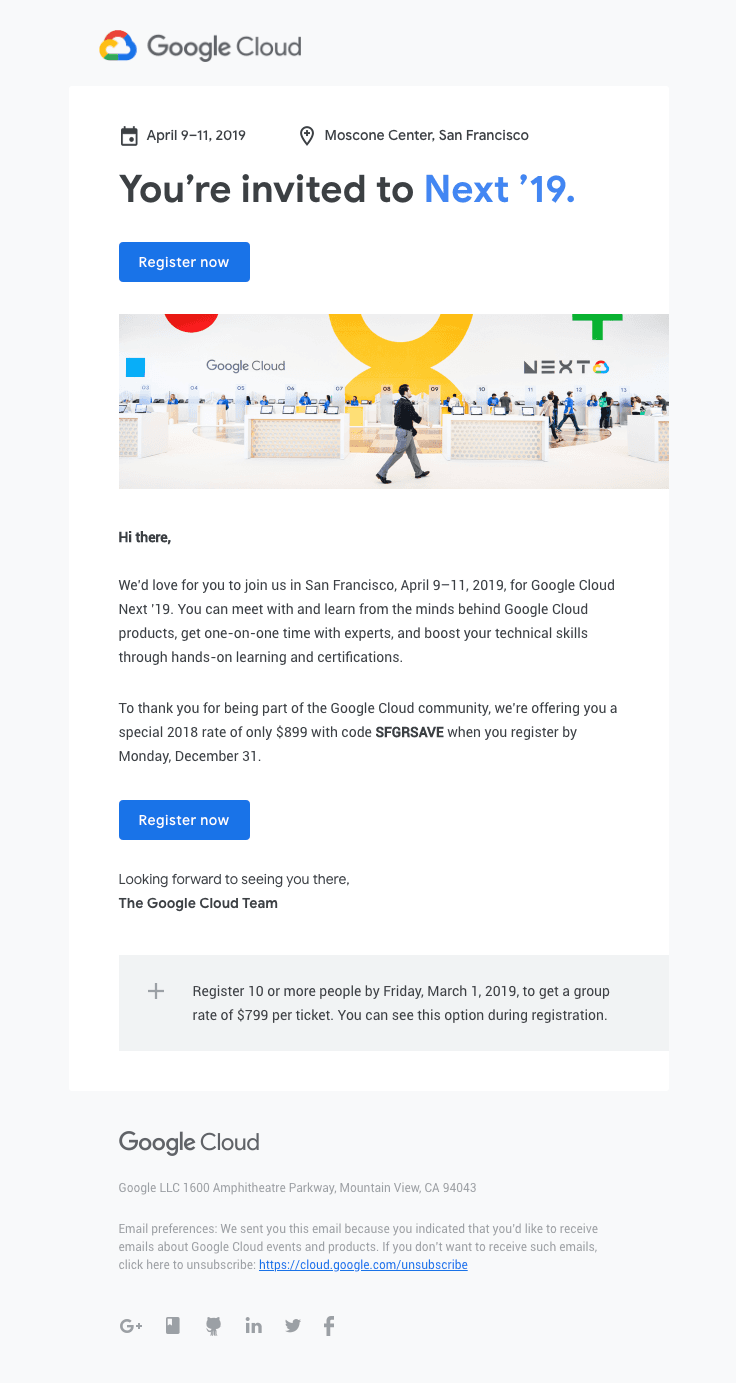
Product launch email sequence best practices
One email is never going to be enough and most of the time you need to mix an email sequence and some in-app messaging to achieve success. For example, you can effectively onboard and engage mobile app users by creating personalized messaging, push notifications, and surveys directly within their app experience.
Keeping these best practices in mind will be a massive help to you.
Your copy should focus on one CTA only
Your CTA is important and it’s crucial that you only have one – that’s right, one.
A great CTA grabs the user’s attention and encourages them to act but if you ask them to do more than one thing, you’re just going to confuse, overwhelm, or annoy them.
The result? No action.
Choose one CTA and one CTA only – for example: see details, yes! I want one, buy now, pre-order now, or see what’s new.
Use real product images to showcase product functionality
Show them, don’t just tell.
Yes, words are important but you can’t dismiss the power of images. Visuals can be just as impactful when it comes to encouraging engagement, setting the tone for your product, and showing your product’s functionality.
Avoid block text and take advantage of contrasting colors to really stand out.
Focus on design consistency and stay on brand
Your brand’s design, colors, and logo are how customers identify you.
Ensuring your launch email has these elements will not only show customers that it’s you contacting them, but design consistency helps build trust – all your marketing materials should be instantly recognizable.
Add a relevant email subject line
Your product announcement email subject line is important because it’s the first thing your customers see.
It should grab their attention – after all, if the subject line isn’t interesting or relevant to you, you’re going to ignore that product announcement email campaign! I know I do.
Sometimes something as simple as “exciting news” works wonders!
Add personalization to your email
Personalizing your email is an easy way to increase the engagement rate of your product launch email campaigns.
Making that little extra effort – adding the customer’s name to the subject line or adding emojis – shows that not only do you value the customer as a person and not just a consumer, but it also that there are people behind the brand. It humanizes you and gives your brand a personality.
Stay away from spamming and comply with the user preferences
Spamming customers is never a good idea. Period.
It’s annoying, often irrelevant, and will result in customers ignoring your emails or unsubscribing altogether.
Instead, comply with the user preferences. There is no point in sending a user a product launch email announcing that you have a brand spanking new shared calendar feature if the user already informed you they work alone.
A/B test different subject lines or CTAs
Some subject lines and CTAs work better than others.
I’d recommend writing 10-20 different subject lines and CTAs and then use A/B testing to see which subject lines generate the highest open rates and which CTAs prompt the quickest actions.
How to announce a product launch with an email sequence
So, your product is ready to go. Time to announce its launch with an email sequence.
1. Build a timeline for your time-based email sequence
Before starting to write your emails build a timeline and think how many emails you should include and what your goal is for each email (sign up for a beta, subscribe to further announcements, login to the app, etc)
The frequency, time of the day, etc. should be based on previous data you have and your audience preferences – there’s no point in sending an email at 5.30 pm if you know the customer isn’t going to get it until the following morning, and by then it might be lost in their inbox!
If you don’t have data, you can consider sending the following four:
2. Send a teaser email
Teaser emails are a great way of increasing engagement with and hyping up your new product.
Teaser emails should aim to pique the target audience’s interest and curiosity and get a conversation started.
Two weeks before the official launch date is usually the best time to send a teaser email.
Check out this example from Apple (yes, I’m using them again – they’re number 1 for a reason).
Its design is sleek and modern, and the text builds anticipation -“Friday can’t come soon enough” is relatable, and “save the date” has romantic connotations (they call weddings to mind), as well as giving the customers something to look forward to.
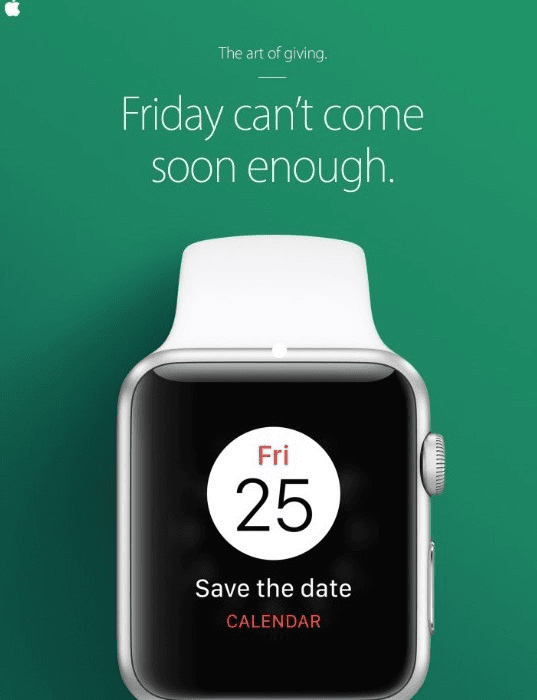
3. Announce the product or feature
The next email in your product launch email sequence is all about engaging your customers. This is where you should reveal:
- New product name
- Product image
- Product features, characteristics, and technical aspects
- The official launch date
It’s usually best to announce your product about a week before the launch campaign. To increase engagement, include an intriguing CTA such as “show details”, as shown below, or, even better, “pre-order now”.
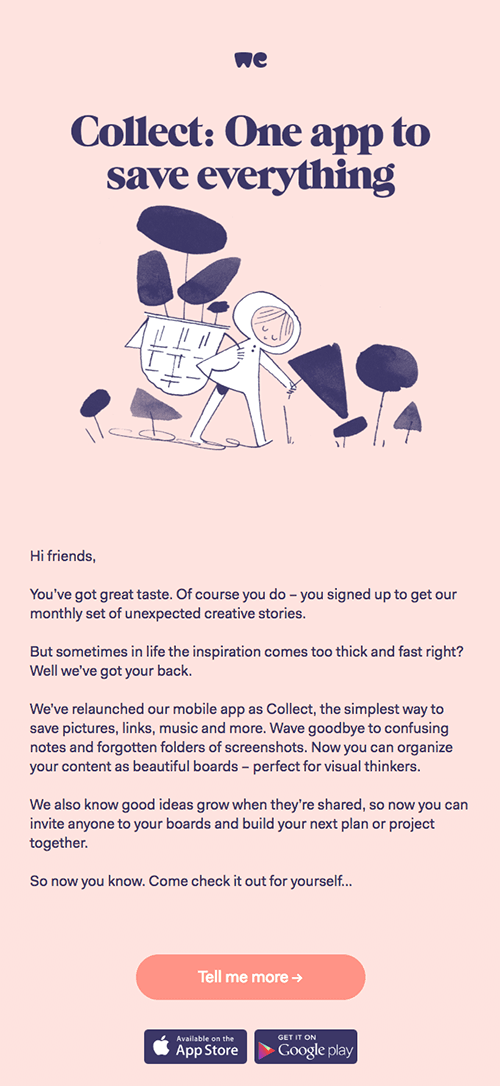
4. Launch email
The final email is the official product launch alert, which is sent out on the announcement’s official date.
It should be personalized to the customers who have already expressed interest in your product during the early stages of the email marketing sequence – they’re the ones most likely to buy it!
This email should have the ultimate CTA – order, subscribe, download (as shown below), whatever your product requires.
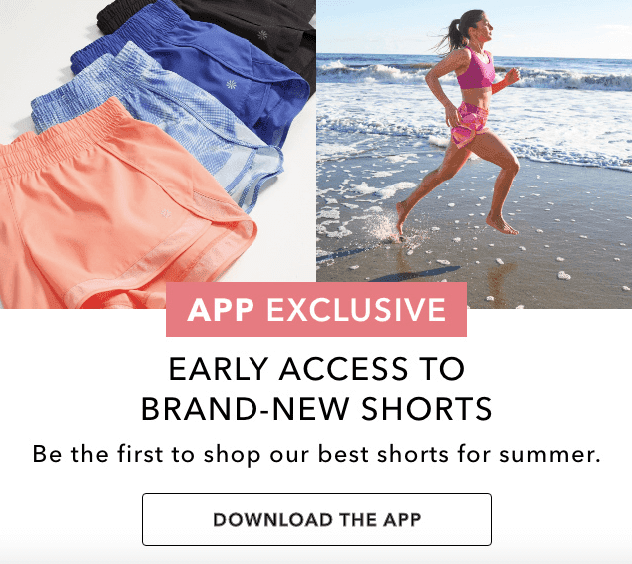
5. Follow-up email
The follow-up email is self-explanatory: an email that reminds your target audience of your new product.
These emails are usually sent out a week later.
They should be aimed at the segments of your audience who hadn’t bought, subscribed, upgraded, or downloaded your new product. Keep an eye on your adoption rates and email accordingly.
Check out this example from Spotify, which includes the CTA “open Spotify”.
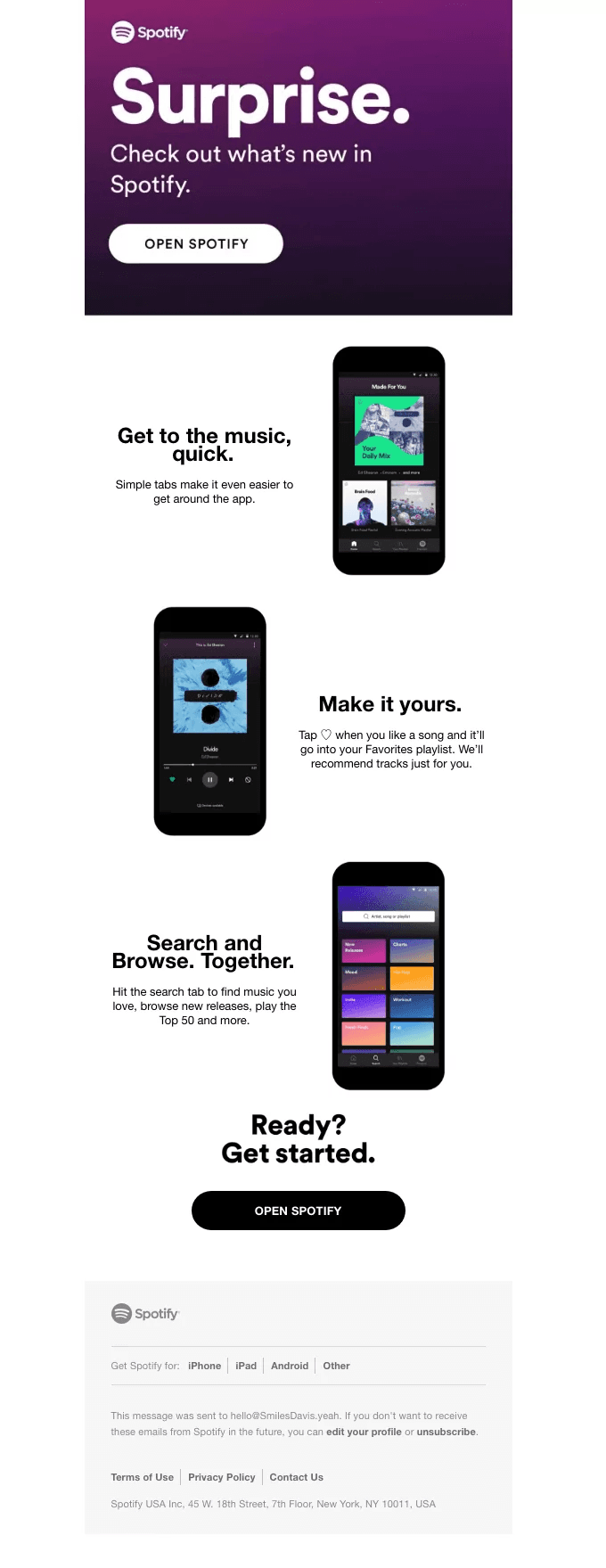
Event-based launch email campaign
This is more contextual
Instead of shouting out your announcement to the entire world (user database), you can create more personalized emails and at least adapt your messaging based on the segment of users and what’s relevant for them.
Then, based on how they engage with your emails, continue the conversation inside the app and trigger other emails only to bring users back and reengage then rather than sending them an email that the new feature is live when they have already engaged with it.
Bonus: don’t forget the onboarding welcome email
Don’t just tell users to try your new product!
Make it human – send an onboarding welcome email and don’t forget to pair it with in-app guidance to shorten the learning curve and help users adopt your product much easier and faster.
Product launch email subject lines examples
You should always be testing different subject lines and adapting the most used ones to your audience and your product.
It’s also important to maintain your brand/tone of voice as you don’t want to sound like someone else, plus if everybody would use the same lines, how would the user recognize you? Stand out
If you’re looking for some inspiration, here are some subject line examples from some great SaaS tools:
Remember: you shouldn’t just copy and paste a clickbait title – SaaS products build relationships and trust with their audience, and that isn’t going to happen with clickbait!
ActiveCampaign email subject lines examples
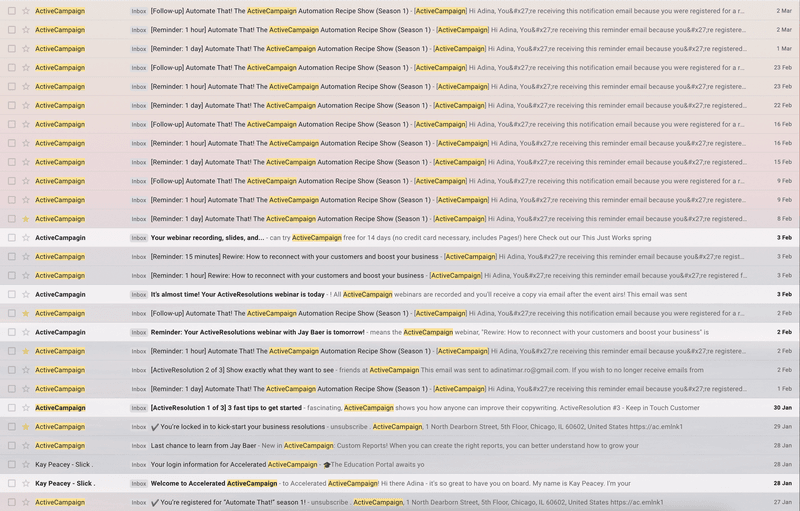
Notice how ActiveCampaign uses a CTA – “automate that!” – as the first part of their subject line.
ClickUp email subject lines examples

ClickUp, on the other hand, uses their subject line to showcase their various features.
Miro email subject lines examples

Miro makes use of emojis to get your attention and to personalize their subject lines.
Figma email subject lines examples

Figma uses humor to catch their recipients’ attention, whilst remaining on-brand. Very impressive!
Loom email subject lines examples
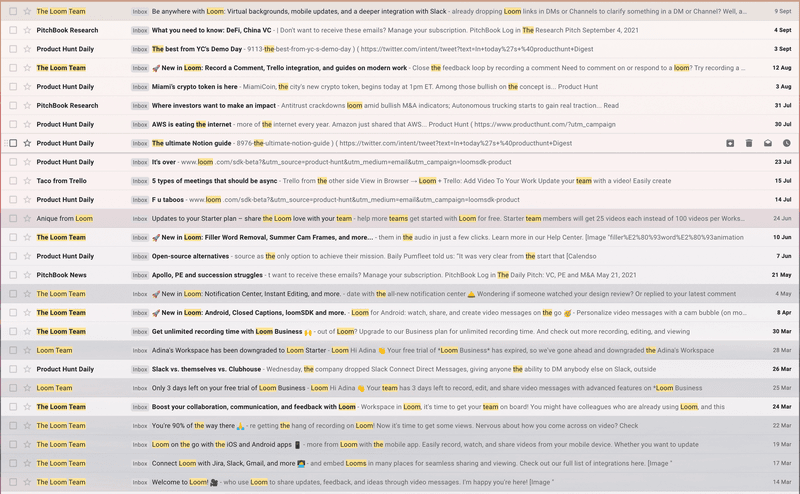
Like Miro, Loom makes use of emojis but uses the same one – a rocket ship – so recipients can immediately identify an email from them.
Mural email subject lines examples

Mural appeal to the recipient as an individual – “you’re invited” – and showcase how the features they’re promoting will help them – “find focus”.
7 New product launch announcement email examples to inspire your next launch
It’s all good to have the right knowledge and data, but where do you go from here? I’ve curated a list of some great product launch email examples to inspire you.
Let’s check them out.
#1 – Userpilot
Called Product Rantz, Userpillot’s newsletter, Userpillot’s newsletter, sent once a week, is how we keep our audience engaged and inspired with product tips and industry-related content.

Why is this a great launch example
- The email combines video and text so it accommodates different types of readers
- It used images from the real product, the study in this case, so customers know what they’re getting
- It focuses on one CTA- “get the study”
#2 – Miro product updates email
Similar to their in-app “What’s new”, Miro has an email version where they pack new product enhancements and updates into a singular email.
You’ll notice they are not the only ones doing this! It works.
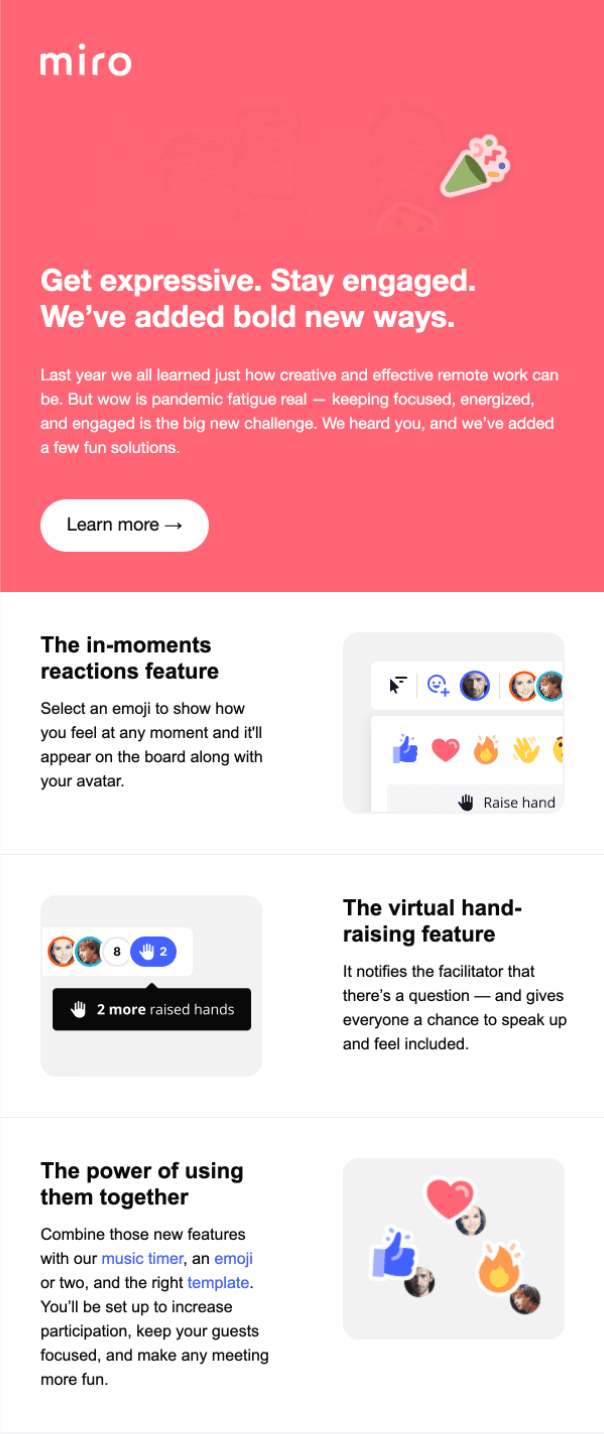
Why is this a great launch example
- Like Userpilot, they use real-life product screenshots showcasing how it will look
- It’s short and sweet: it packs small product updates in one announcement
- Generally, it’s a great example of regular updates that are common in the SaaS industry
#3 – ActiveCampaign Marketplace product update email
I had to include some examples from ActiveCampaign. After all, their product is all about sending email campaigns so where else should you look for inspiration?
What’s different about their launch emails is that they focus on text-only compared to other examples we’ve seen so far.
Which is best: text-only or text and images? The answer is: you need to test it.
What’s worked for ActiveCampaign might not be your audience’s preference but it’s definitely worth a try.
So if you’re looking for inspiration for a text-only email launch campaign, check this out.
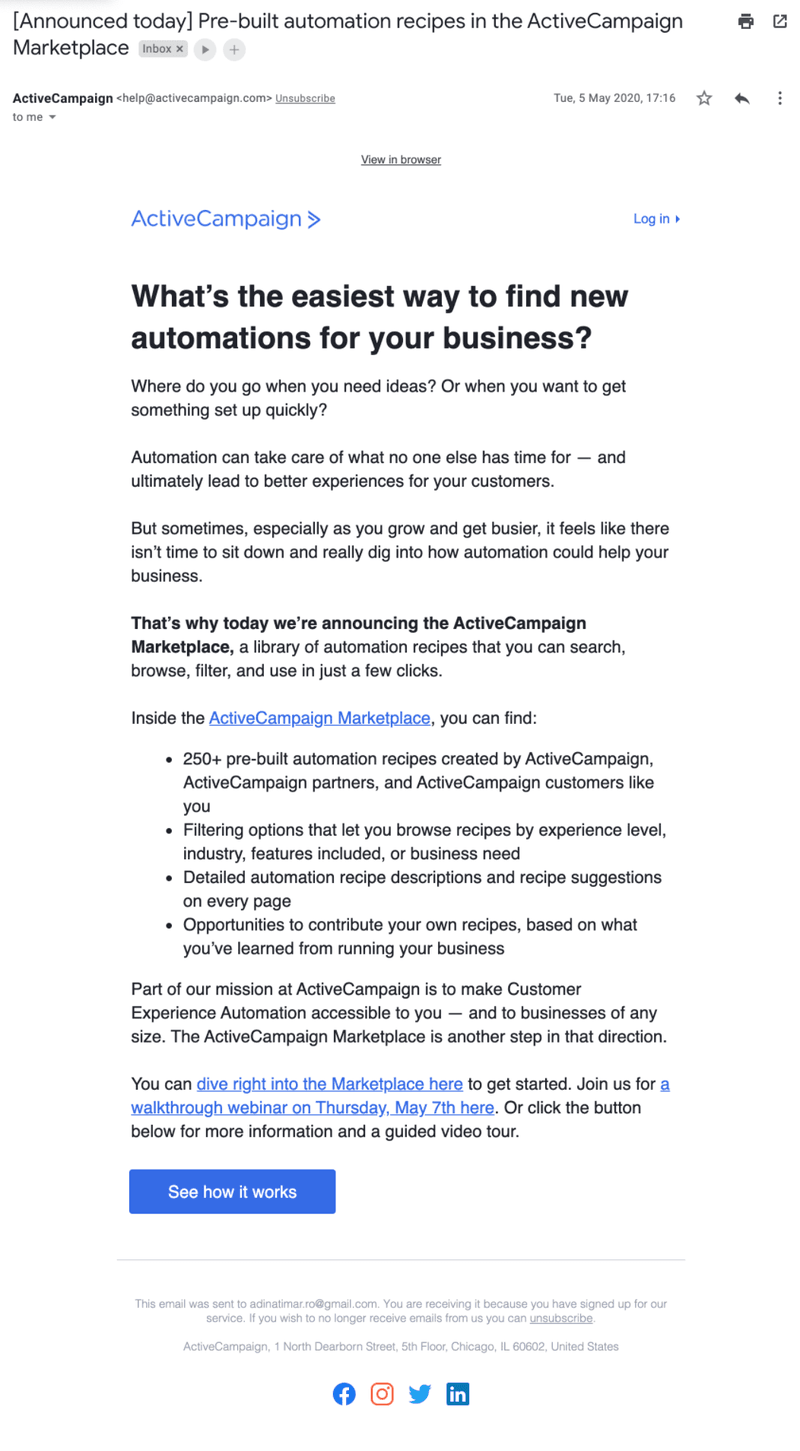
Why is this a great launch example
- Your eyes go straight to the CTA due to the lack of images
- The title says it all and their copy is brilliant: you can only read the email subject line, title, and CTA and you already know what it’s being launched and what you need to do next
#4 – ActiveCampaign event announcement email
Here’s another example that showcases their email design style proving that text-heavy messages do work sometimes.
This email promotes their conference and is part of a series.
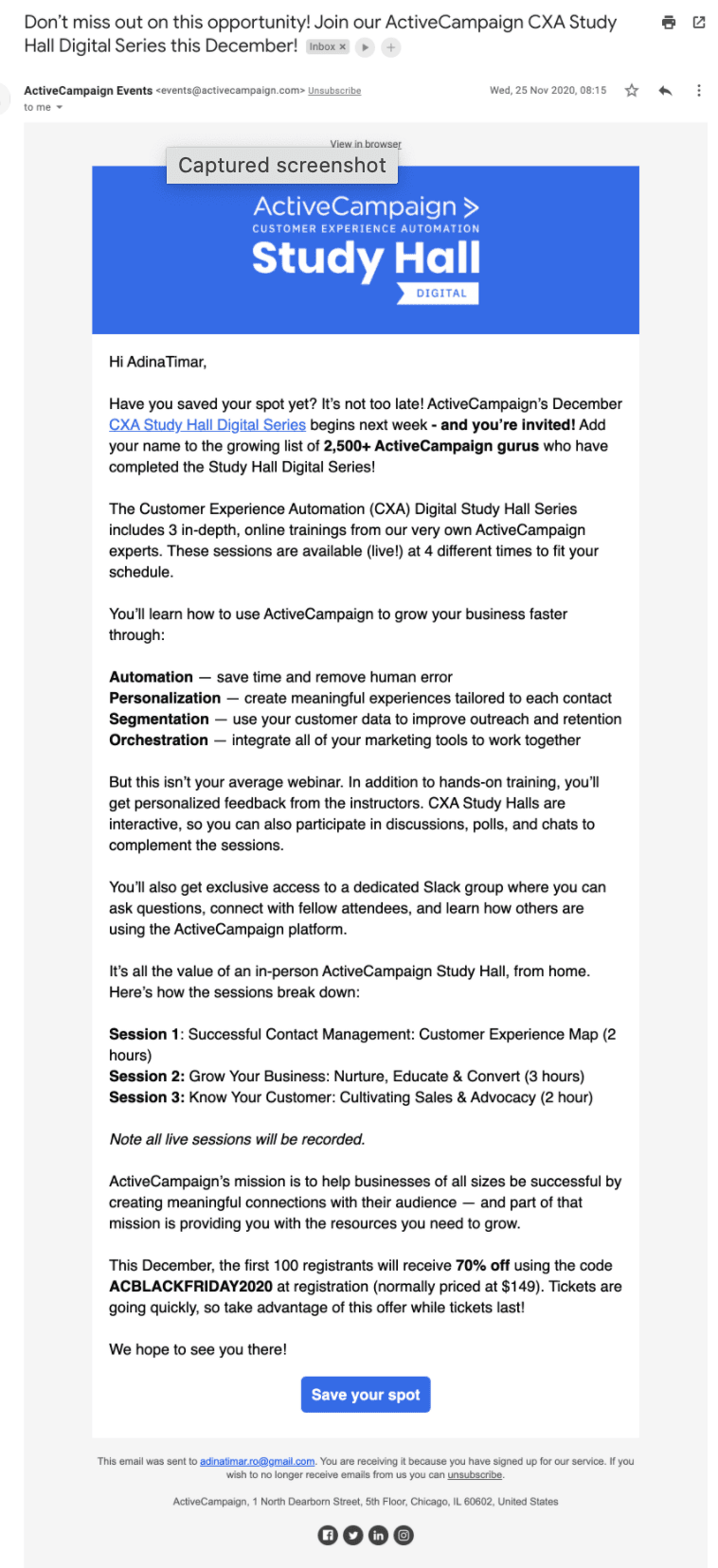
Why is this a great launch example
- It covers everything you need to know about the event
- It focuses on one CTA -” book a place”
- They use an incentive to drive the reader to take action
#5 – Figma’s new product beta announcement email
Here’s how Figma announced their new Beta product FIGJAM to their audience using email.
FIGJAM is Figma’s whiteboard tool type of product and even though they do not shout out that the product is still in Beta, they did use their community members to announce the new product.

Why is this a great launch example
- They showcase the product through graphics: sticky notes, diagrams, and emoticons – all features the new product has
- They built their email design using the product being featured – FigJam is a whiteboard tool and the email literally looks like one
#6 – SparkToro pre-order for product beta announcement email
SparkToro’s pre-order beta announcement email campaign may be automated, but it still feels personal – making it look like it’s from Rand himself makes it feel special and, after all, isn’t it rude to ignore an invitation?
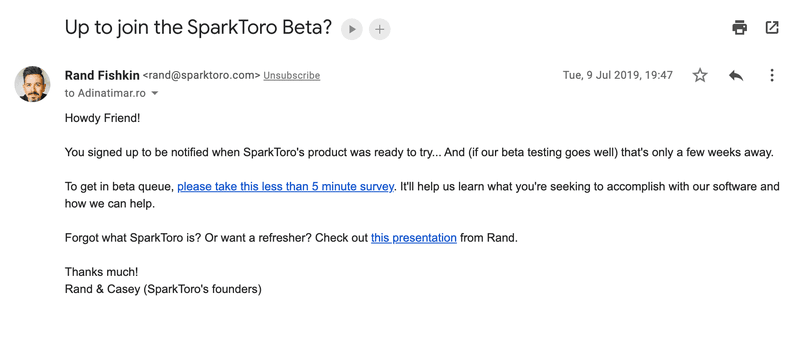
Why is this a great launch example
- It’s personal and casual – “Howdy friend!”
- It values feedback: they ask recipients to fill in the survey to help SparkToro make their software as helpful as possible for the recipient’s job-to-be-done
- Their CTA is helpful – “forgot?” or “need a refresher?”
#7 – Asana product release announcement
Asana focuses on just one announcement, rather than a jam-packed “what’s new” email, in this case, their updated language feature.
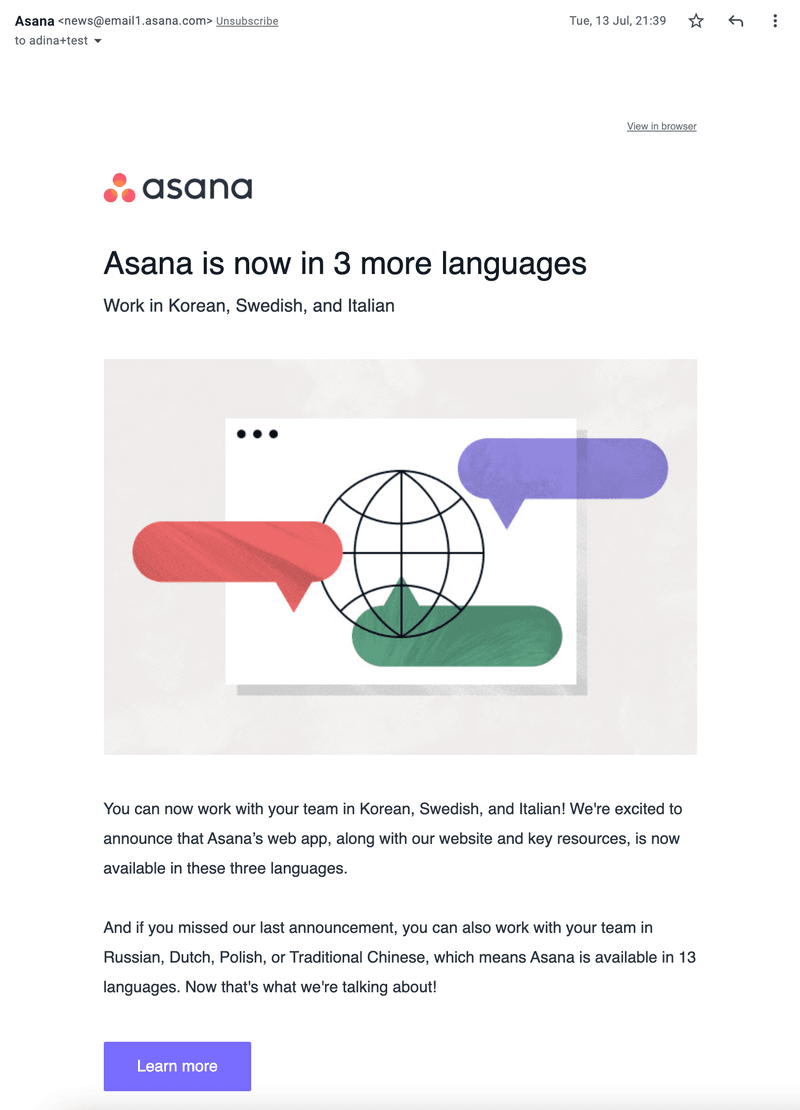
Why is this a great launch example
- It’s colorful and inclusive: the more languages your software can be used in, the wider your potential audience becomes
- It alludes to a previous announcement to highlight the product enhancement’s impact
- Referencing the previous 4 other languages added shows Asana’s dedication to continually improving their product
Key Takeaways
Product launch emails are a fantastic marketing strategy for grabbing the attention of your current customers and target audience. Done right, they will increase sales, engagement, and user retention.
Want to get started with your product launch email campaign? Get a Userpilot demo and get started right away without needing to code here.


